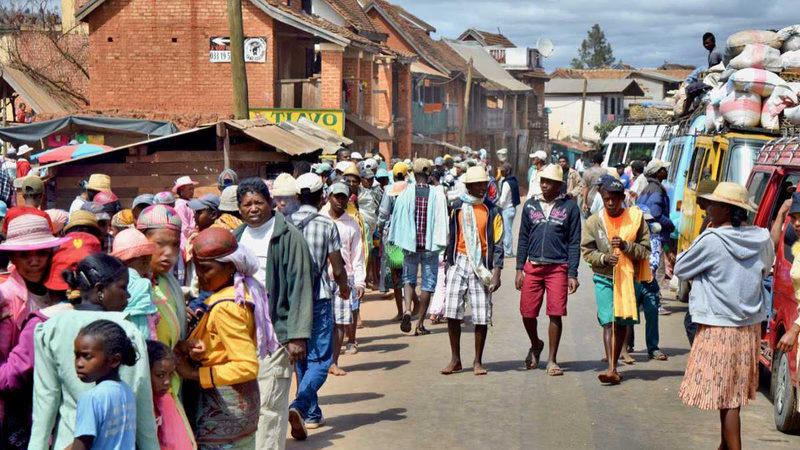
Madagascar`s economy is largely based on agriculture, mining, fishing, and forestry. The country is one of the world`s largest producers of vanilla, cloves, and ylang-ylang. Madagascar also exports significant quantities of coffee, cocoa, sugar, and textiles. Despite its rich natural resources, the country struggles with poverty and underdevelopment, relying on foreign aid and international investment to stimulate growth.
The financial system in Madagascar is still underdeveloped. While there are several banks and microfinance institutions operating in the country, access to financial services, especially in rural areas, remains limited. The Malagasy currency, the Ariary (MGA), has been subject to fluctuations, and inflation is a recurring issue. Efforts to strengthen the financial sector are ongoing, but corruption and political instability have hindered substantial progress.
In terms of trade with countries in West Asia and the Middle East, Madagascar exports agricultural products such as vanilla, seafood, and spices. Its exports are generally targeted towards niche markets that value organic and high-quality goods. On the import side, Madagascar sources machinery, petroleum products, vehicles, and consumer goods from these regions. Countries like the UAE, Saudi Arabia, and Turkey have growing trade relations with Madagascar, primarily driven by Madagascar’s need for industrial products and fuel.
The trade balance with the Middle East and West Asia tends to be in deficit, as Madagascar imports more than it exports to these regions. However, there is potential for growth in sectors like renewable energy, agribusiness, and tourism, as Madagascar seeks to diversify its economy. The government has been working to attract foreign investment by improving infrastructure, but challenges such as weak governance, limited transportation networks, and energy shortages remain obstacles to economic expansion.
-
 Grace Iari 2 months ago
Grace Iari 2 months ago Madagascar
Quartz, labradorite, agate, marble, amethyst
Madagascar
Quartz, labradorite, agate, marble, amethyst
Dear Sirs, I hope this message finds you well. I am Mana, from GRÂCE CONSULTING Sarlu Madagascar. At GRACE CONSULTING Sarlu, we are exporter and spec...Details
In a significant shift, Madagascar"s merchandise import and export indices have shown remarkable variations from global trends. In 2023, Madagascar"s merchandise import value index dropped to 86. 0, far below the global average of 101. 1. This decline reflects a potential contraction in demand or strategic shifts in import sourcing. Conversely, the country"s export value index also decreased to 87. 9, compared to a global average of 102. 3, suggesting challenges in global competitiveness or shifting demand patterns.
The GDP of Madagascar grew from $15. 8 billion in 2023, marking steady growth in contrast to the global GDP, which reached $883. 7 billion. Despite this growth, Madagascar"s exports of goods and services as a percentage of GDP slightly decreased to 26. 9% in 2023, underperforming the global average of 32. 1%. This indicates a gap that could be an opportunity for businesses to explore untapped markets, particularly in West Asia. On the investment front, Madagascar"s gross capital formation increased to 21.
6% of GDP, closing in on the global average of 23. 8%. This suggests an improving environment for infrastructure and industrial investments, positioning the country as an emerging target for foreign direct investments (FDIs) in sectors like renewable energy and mining. The exchange rate trends have been challenging, with the Malagasy ariary depreciating from 4096. 1 per US dollar in 2022 to 4429. 6 in 2023. This depreciation could present opportunities for exporters in Madagascar to gain competitive pricing advantages in foreign markets, particularly in West Asia"s commodity sectors. Businesses looking to expand into the Malagasy market or explore export opportunities can benefit from the AI-driven insights and networking capabilities of platforms like Aritral.
com. By creating a business profile on Aritral. com, exporters and importers gain access to product listing services and AI-powered marketing tools, enhancing their visibility and market reach in the competitive B2B Asian market.

